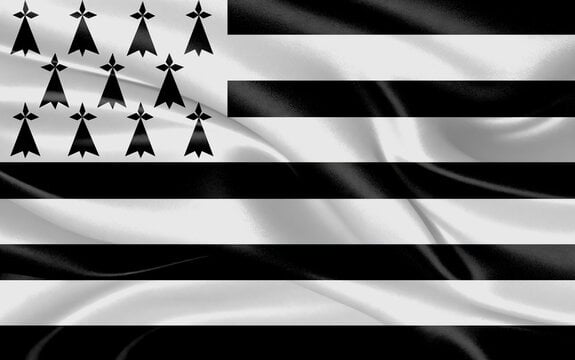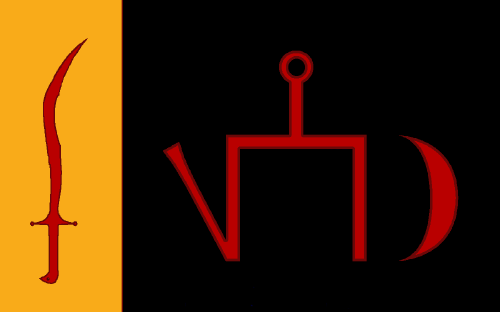This nation is in Vacation Mode for the next 121 turns. This nation cannot be attacked or traded with during that time.
| National Factbook |
| Flag: |

|
| Nation Name: |
Brettony |
| Leader Name: |
Annatarin |
| Currency: |

Dracma |
| National Animal: |

Pelican |
| History: |
History
The New Brettony rose from the chaos that followed the collapse of the old world. Survivors along the eastern seaboard united under shared values of faith, duty, and order. They restored monarchic leadership, not as tyranny, but as a stabilizing tradition advised by councils.
Grand Duke Annatarin, a respected former officer, was chosen as the first sovereign, symbolizing steady, lawful leadership. Early years focused on survival, infrastructure, and drafting a constitution, balancing royal authority with representative government.
Christianity became the nation’s moral backbone, embraced freely by the people. The Duchy expanded peacefully or defensively by absorbing like-minded settlements. Unlike many new states, New Brettony avoided extremes and chose a path of stability through moral order and civic responsibility.
Government Structure
New Brettony is a constitutional monarchy with a unique blend of tradition and democracy.
The Grand Duke is Head of State and Government but delegates daily governance to a Prime Minister he appoints alone. The Prime Minister can be removed by a 3/5 vote of no confidence in the elected lower house.
The Upper House, modeled on the old British House of Lords but improved, includes hereditary nobles, senior clergy, and appointed life peers. It reviews laws, offers guidance, and can delay or amend legislation.
The Lower House, known as the House of Burgesses, is elected by the people through a mixed system that combines district and proportional representation. It initiates laws, controls spending, and can remove the Prime Minister with a 3/5 vote. |
| Geography |
| Continent: |
North America |
| Land Area: |
29,129.05 sq. km |
| Terrain: |
The Grand Duchy of New Brettony occupies a proud and historic place in the New England region of North America, encompassing parts of modern-day Massachusetts, New Hampshire, Vermont, and Maine. Its borders stretch from the rugged Atlantic coastline westward into the rolling hills and dense forests of the interior, creating a diverse and strategically valuable landscape.
Coastal Areas:
New Brettony’s eastern border is defined by a jagged, rocky coastline dotted with natural harbors and historic port towns. These ports have been crucial since the nation’s founding, serving as gateways for trade, fishing, and naval defense. The cold Atlantic waters shape much of the local climate, bringing cool summers and snowy, harsh winters.
Forests and Highlands:
Moving inland, the terrain rises into forested highlands and mountain ranges. The southern and western parts of New Brettony feature thick, ancient forests dominated by pine, spruce, and hardwood trees. These forests provide natural resources like timber and game, sustaining rural communities and traditional industries.
To the north and west, the terrain becomes more mountainous, blending into the southern reaches of the White Mountains and the Green Mountains. These ranges are less forbidding than the Rockies but still provide natural defense, beautiful landscapes, and a source of fresh water from their many rivers and streams.
Rivers and Lakes:
Several major rivers wind through New Brettony, including tributaries of the Connecticut and Merrimack Rivers, supplying water for agriculture and settlements. Numerous lakes and freshwater bodies dot the landscape, supporting fishing and outdoor recreation, which form part of the national character. |
| Highest Peak: |
Mt. Sanctus,
1,000 meters
|
| Lowest Valley: |
Covenant Bay,
0 meters
|
| Climate: |
The climate varies from the coastal maritime zone’s relatively moderate weather to colder, more severe conditions inland and in the mountains. Winters are long and snowy, reflecting New Brettony’s hardy and disciplined people, while summers are mild and productive, ideal for farming and community life. |
| People & Society |
| Population: |
2,193,571 people |
| Demonym: |
Brettonian |
| Demonym Plural: |
Brettonians |
| Ethnic Groups: |
Breton-American - 64.5%
Mixed - 35.5% |
| Languages: |
English - 91.2%
Breton - 5.4%
Indigenous and others - 3.4% |
| Religions: |
Christianity - 88.7%
Other Christian Denominations - 8.1%
Minority or Folk Traditions - 3.2% |
| Health |
| Life Expectancy: |
78 years |
| Obesity: |
18.6% |
| Alcohol Users: |
61.4% |
| Tobacco Users: |
22.7% |
| Cannabis Users: |
6.5% |
| Hard Drug Users: |
1.8% |
| Economy |
| Description: |
The economy of New Brettony is rooted in self-reliance, steady growth, and moral responsibility. While the nation supports free enterprise and open markets, it does not embrace unrestrained capitalism. Instead, it upholds a moderate economic model, encouraging individual initiative while allowing the government to step in when necessary to maintain stability, justice, and the common good.
Economic System:
New Brettony follows a mixed-market economy. Private ownership and entrepreneurship are protected and encouraged, but the state takes an active role in key areas like infrastructure, resource regulation, and national resilience. Deficit spending is permitted during emergencies or for strategic investment, but long-term fiscal discipline is expected.
A progressive income tax ensures that wealthier citizens contribute more to the public good, while small businesses and lower-income earners benefit from tax relief. The government does not operate a welfare state, but it offers targeted support to the truly needy, particularly those who pass drug testing and demonstrate a willingness to work. |
| Average Yearly Income: |
$213.48 |
| Gross Domestic Product (GDP): |
$2,588,346,286.00 |
| GDP per Capita: |
$1,179.97 |
| Gross National Income (GNI): |
$1,907,025,355.00 |
| Industries: |
The Grand Duchy of New Brettony maintains a diversified, resilient, and morally ordered industrial base. Industry is not driven solely by profit, but by service to the common good, national self-sufficiency, and cultural craftsmanship. The government encourages innovation where it serves the nation’s interest, and strictly regulates waste, exploitation, and monopolization.
⚙️ Light Manufacturing
New Brettony specializes in small to mid-scale industrial production, particularly:
Machine tools, farm equipment, and hand-crafted firearms
Textiles and woolen goods, often produced by rural cooperatives
Cottage industries producing furniture, leather, and metalworks
Mass industrialization is discouraged in favor of high-quality, skilled labor, and local production.
🌲 Forestry and Woodcraft
Forests are carefully managed for long-term use. New Brettony is a key producer of:
Lumber, hardwoods, and paper products
Construction timber and artisan woodworking
Charcoal and biomass for clean fuel alternatives
Logging companies are required to follow strict replanting laws.
🌾 Agriculture and Food Processing
Agriculture is decentralized but highly productive:
Dairy farming, known for butter, cheese, and cream
Maple syrup, apples, potatoes, and hardy grains
Free-range livestock and ethical slaughterhouses
Canning and food preservation for strategic reserves
Rural communities form the backbone of this sector.
⚓ Maritime and Fisheries
With a long coastline, New Brettony has a proud seafaring tradition:
Commercial fishing of cod, mackerel, lobster, and shellfish
Shipbuilding, both for trade and national defense
Maritime navigation equipment and sailcraft exports
Fishing fleets are locally owned, with government oversight to prevent overfishing.
🔌 Energy and Resources
New Brettony avoids dependence on fossil fuels:
Hydroelectric dams and wind farms power the grid
Biomass fuel and geothermal projects supplement local needs
Minimal coal or oil, imported only for strategic stockpiles
Energy is considered a national priority, with public-private collaboration.
🛡 Defense and Civil Engineering
The government operates strategic industries directly or under royal charter:
Weapons and armor manufacturing for national defense
Fortification projects, roads, ports, and bridges
Emergency supply depots and railway networks
Occasional munitions and heavy vehicle contracts under strict control
These industries are directed toward defensive strength, not conquest. |
| Military |
| History: |
⚔️ Military Forces of the Grand Duchy of New Brettony
The Grand Ducal Armed Forces exist to defend the realm, uphold law and order, and honor the Duchy’s alliance commitments. Service to the nation is expected of all citizens, either through military enlistment or civil duty. The armed forces are guided by the principles of discipline, restraint, and allegiance to Crown and Country.
Though not the largest, New Brettony's military is well-trained, versatile, and trusted both at home and by allies abroad. Its strength lies in its coordination, command discipline, and moral clarity.
🛡 Grand Ducal Army
The army forms the backbone of national defense. It is organized around regiments raised from the Duchy’s provinces, each with its own heraldry, chaplain, and traditions.
Armored units, mobile infantry, artillery batteries, and combat engineers
Specialized mountain and urban warfare divisions
Support corps for logistics, field medicine, signals, and battlefield repair
Local militia maintained by each province, trained regularly and integrated into national command in wartime
Each soldier swears loyalty to God, Crown, and Constitution.
⚔️ The Embercloaks (Raiding & Expeditionary Command)
New Brettony's elite strike force, the Embercloaks, are drawn from the most disciplined and daring ranks.
Conduct raids, economic strikes, and expeditionary campaigns
Skilled in rapid deployment, flanking, and deep penetration missions
Known for leaving enemy depots in flames, then vanishing into the hills
Operate under high ethical standards, never targeting civilians or hospitals
They serve both as sword and signal to allies that New Brettony answers its obligations.
⚓ Royal Maritime Service (RMS)
The naval branch defends the coast, escorts trade, and carries out alliance operations abroad.
Operates fast-attack craft, escort vessels, and long-range strike ships
Supports coastal artillery, naval militias, and port defenses
Naval traditions are steeped in Christian brotherhood and honor at sea
The RMS ensures New Brettony’s waters remain secure and its voice heard abroad.
🛫 Aerial Command
The Duchy’s air forces provide homeland defense, precision support, and rapid response to threats.
Tactical squadrons support ground units and patrol national airspace
Strategic wings carry out raids and deterrent operations as required
Dedicated transport wings ensure rapid mobility across provinces
Pilots are held to high physical and moral standards.
🕯 Crown Intelligence Office (CIO)
The Duchy’s intelligence and counterintelligence branch operates discreetly to safeguard national security.
Tracks foreign plots, monitors internal subversion, and advises the Crown
Coordinates with allied intelligence for joint operations abroad
Operates within the bounds of law and royal decree
New Brettony’s armed forces reflect its people: loyal, disciplined, and devoted not to conquest, but to righteous strength. |
| Soldiers: |
0 |
| Tanks: |
0 |
| Aircraft: |
132 |
| Ships: |
1 |
| Missiles: |
0 |
| Nuclear Weapons: |
0 |
| Last Updated: 06/25/2025 03:56 am |



















